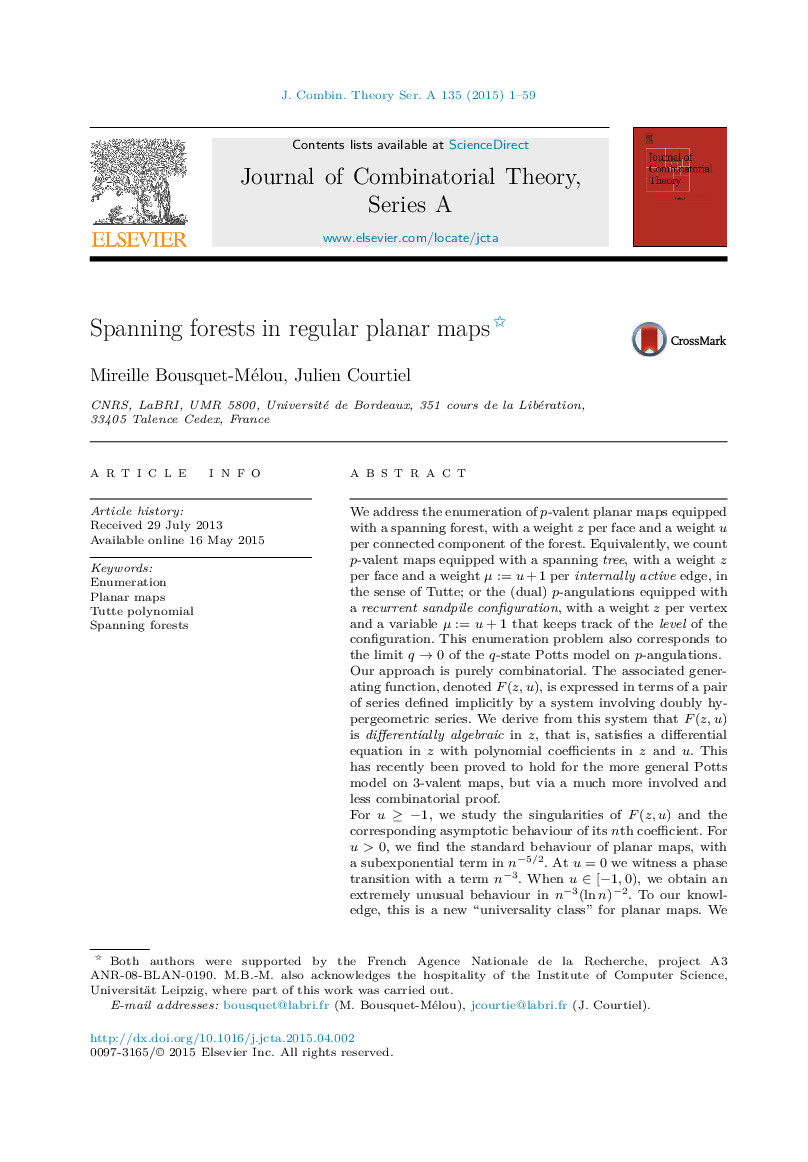| کد مقاله | کد نشریه | سال انتشار | مقاله انگلیسی | نسخه تمام متن |
|---|---|---|---|---|
| 4655185 | 1632937 | 2015 | 59 صفحه PDF | دانلود رایگان |
We address the enumeration of p-valent planar maps equipped with a spanning forest, with a weight z per face and a weight u per connected component of the forest. Equivalently, we count p-valent maps equipped with a spanning tree, with a weight z per face and a weight μ:=u+1μ:=u+1 per internally active edge, in the sense of Tutte; or the (dual) p-angulations equipped with a recurrent sandpile configuration, with a weight z per vertex and a variable μ:=u+1μ:=u+1 that keeps track of the level of the configuration. This enumeration problem also corresponds to the limit q→0q→0 of the q-state Potts model on p-angulations.Our approach is purely combinatorial. The associated generating function, denoted F(z,u)F(z,u), is expressed in terms of a pair of series defined implicitly by a system involving doubly hypergeometric series. We derive from this system that F(z,u)F(z,u) is differentially algebraic in z, that is, satisfies a differential equation in z with polynomial coefficients in z and u. This has recently been proved to hold for the more general Potts model on 3-valent maps, but via a much more involved and less combinatorial proof.For u≥−1u≥−1, we study the singularities of F(z,u)F(z,u) and the corresponding asymptotic behaviour of its n th coefficient. For u>0u>0, we find the standard behaviour of planar maps, with a subexponential term in n−5/2n−5/2. At u=0u=0 we witness a phase transition with a term n−3n−3. When u∈[−1,0)u∈[−1,0), we obtain an extremely unusual behaviour in n−3(lnn)−2n−3(lnn)−2. To our knowledge, this is a new “universality class” for planar maps. We analyze the phase transition at u=0u=0 in terms of the sandpile model on large maps, and find it to be of infinite order.
Journal: Journal of Combinatorial Theory, Series A - Volume 135, October 2015, Pages 1–59
